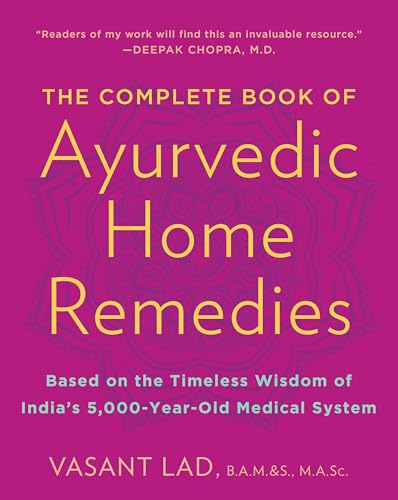As the first rays of the new year pierce through the winter chill, a potent energy stirs within us. It’s a yearning for change, a whisper that beckons us to shed the past year’s heaviness and embrace a vibrant new beginning. In Ayurveda any time of transition is seen as an auspicious opportunity for self-reflection, renewal, and alignment with our authentic nature Ayurveda teaches that true transformation begins from within. By incorporating these 12 transformative practices into your life, you can embark on a journey to nourish your body, mind, and spirit, setting the stage for a year brimming with health, happiness, and inner radiance. The Importance of Starting Fresh Just as spring awakens the earth after a long winter, Ayurveda emphasizes the importance of cleansing and balancing the body to prepare for new beginnings. Panchakarma, the ultimate detoxification process in Ayurveda, offers a deeper level of internal purification....
Finding
harmony and inspiration is a lifelong process, and the ancient medical
system of Ayurveda can provide guidance and tips along the way,
especially as the season changes.
According to Ayurvedic wisdom, as the snow is melting and the air is
warming, transitioning from winter to spring, you’re moving out of Vata season and aligning with Kapha
elements. As the days get longer, there may be a joyful spring in your
step, even though you may also notice that life moves a bit slower. You
begin to crave time in nature and fresh fruits, slowly but surely
shedding your wintertime lifestyle.
Ayurveda reminds us that opposites facilitate balance: this is why
you rarely crave spicy foods on a hot, summer beach day and why warm
soup on a cold day is so nourishing. So, take on a holistic approach to
wellness this spring, and trust yourself and your body. What would taste
good? What would nourish you?
As April showers give way to May and June flowers, here are five ideas for finding balance and inspiration:
1. Do a Cleanse
In Ayurvedic practices, a cleanse for the body and mind is often
experienced at the change of the season. Take a moment and look both
inward and outward at what needs clearing. Now might be a good time to
try out some recipes from that vegetarian cookbook you got for the
holidays or do a deep declutter of your workspace. Perhaps you need to
call a therapist or schedule a long journaling session to help release
that thought you can’t seem to release.
Though you may choose to try something like a rigorous panchakarma,
or purifying ritual, an overhaul of your desk (goodbye last year’s
bills!), sleeping space (goodbye sheets that scratch me!), pantry
(goodbye processed foods!), refrigerator (goodbye sugar!), or bathroom
toiletries (goodbye ingredients I can’t pronounce!) can make your space
supportive for inspiration and intention.
2. Cook Nourishing Food
During spring months, choose Kapha-balancing foods.
Ayurvedic chefs recommend favoring food that is warm, light, and
well-spiced, especially pungent spices such as:
Reduce cold, sour, sweet, and salty foods, as well as all dairy products and fatty meats. In The Complete Book of Ayurvedic Home Remedies,

Vasant Lad recommends drinking tea made from ginger, black pepper, and
cinnamon after each meal. You can also try adding this recipe to your
routine:
An Ayurvedic staple, Kitchari cooked with kapha-balancing
veggies can be served as a side dish or main course. There are endless
variations of this complete meal, so combine the grains, proteins, and
vegetables to taste. Serves 1-2.
Ingredients:
- 1/2 cup rice
- ¼ cup split mung dhal
- 1 1/2 cups water or veggie broth
- 1 small sweet potato, chopped
- 1 cup kapha-balancing vegetables: broccoli, celery, kale, mushrooms, beets, or whatever is in season local to your region
- 1 tablespoon ghee or olive oil
- 1 tablespoon pumpkin seeds
- 1 tablespoon chopped scallions
- 1 teaspoon curry powder
- ¼ cup organic coconut milk
- 1 tablespoon lemon juice
- salt and pepper to taste
Directions:
Rinse rice and dhal. Bring rice, dhal, and water to boil over high heat then simmer on low for about 5 minutes.
Place chopped vegetables and sweet potato on top of the mixture. Cover and simmer for 10 minutes.
As the rice and vegetables cook, sauté the pumpkin seeds and
scallions in ghee or olive oil until light brown. Stir in the curry
powder.
Add the coconut milk and lemon juice to the sauté and cook for 15 minutes.
When the rice and vegetables are done, add the spices to the rice and stir. Season with salt and pepper.
Enjoy warm for breakfast, lunch, or dinner.
This recipe inspired from Eat, Taste, Heal: An Ayurvedic Cookbook for Modern Living by Thomas Yarema, Daniel Rhoda, and Johnny Brannigan.

3. Create an Altar
Invite inspiration by setting up a special table or space and arranging:
- Photos
- Stones
- Crystals
- Incense
- Mala beads
- Vision board
- Positive affirmations
- Other beautiful items
4. Get Outside
As the earth awakens from its winter slumber, take time to enjoy the
beauty of nature. The fresh air and new sights will stimulate the brain
and invigorate the body:
- Go for an urban stroll
- Spend the day hiking
- Check out a farmer’s market
- Ask for a tour of your local nursery
- Plan a multi-day getaway to a state or national park you’ve always wanted to visit
5. Cultivate a Ritual
Create a routine you will look forward to in the morning and evening.
You can even create a mid-day routine to break up the monotony of
meetings or carpool schedules. Elements to consider, in any order you’d
like, include:
- Lighting a candle
- Breathing deeply
- Reflecting on an intention
- Exercising
- Meditating
- Cooking healthy foods
- Journaling
- Reciting positive affirmations
- Sketching
- Reading
Consider your favorite activity as a child, and add that into
your daily or weekly ritual as well. You can also take yourself on a
weekly date of sensory delights:
- Visit an art museum
- Meander through the library
- Find time for a seaside walk
- Get on your yoga mat
As Ayurveda is a holistic approach to health and wellness,
specifics for springtime habits will be different for different people.
Remember to bring mindfulness to your eating, sleeping, exercise, and
wellness routines to reap the full benefits of spring.

Comments
Post a Comment